Editor’s Note: This piece was a finalist in the Pulse writing contest, “On Being Different.”
When I was diagnosed with breast cancer, my doctor, Dr. Thompson, who looks like the comedian Norm MacDonald and tells smart-ass jokes and likes to draw stick-figure breasts on a whiteboard to show surgical options, asked, “Do you have a family history of breast cancer?”
He had already drawn a series of disembodied breasts before he asked this. The breasts were squared off, with Lego nipples—nothing Victoria’s Secret-ish, nothing human.
Years later, a high-school principal in Florida would be fired for showing pictures of Michelangelo’s David to students. Such is the stupidity of humans when faced with the reality of human bodies, all that fragile beauty and terror.
I’d been warned about Dr. Thompson’s passion for sketching. When I called to make an appointment, his assistant said, “Doc likes to draw a lot.”
I had no idea what she meant, so I said, “Okay?”
I said “okay” a lot back then. When another doctor showed me what she saw on my mammogram—tiny flecks that lined up like grains of rice in my left breast—and called this “concerning,” a word as neutral as oatmeal, I said, “Okay.”
When a nurse called to confirm malignancy, and when she said, “I’m sorry,” then said again, “Sorry, sorry,” I said, “Okay.”
I may have thanked her.
I hope I did.
“Manners,” the mother who raised and loved me said. “Whatever day you’re having, put a smile on your goddamned face. Your problems are not other people’s problems. Remember that.”
My mother was a nurse. She was tough and lovely, and she died. Breast cancer.
I am adopted. My mother’s story is not my story.
About my family history, I said, “I don’t know.” And Dr. Thompson held his Sharpie in midair and said, “Explain.”
Dr. Thompson may have been a great artist. Home with his wife, whom he called Mrs. Thompson, as in “Mrs. Thompson requires my presence at a gala, and so I’m not scheduling surgeries then because I fear death,” Dr. Thompson may have painted masterpieces. He may have painted happy little trees. But in his office, with his pocketful of Sharpies, he was limited.
I was limited, too.
I couldn’t explain.
Adopted people like me don’t know their medical histories. It’s something we must articulate on forms. Again and again.
Explain.
History of cancer? Unknown.
History of heart disease? Unknown.
History of, history of, history of—unknown, unknown.
Explain. Explain.
“Being adopted is like a book with its first chapter torn out,” author Jeannette Winterson says.
Years before my diagnosis, I did an adoption search. My daughter was born with a birth defect that I’d had, too. I panicked. I hadn’t thought much about genetics, what I might have handed down without knowing.
I’d been adopted through Catholic Charities. My Catholic Charities social worker held my file—thick, redacted—when we met, though she couldn’t let me see it. My file was so ordinary—a manila folder.
“Sometimes these things work out, like on Oprah,” the social worker said. “Sometimes they don’t.”
She pushed my file across her desk, just out of reach.
“Most times,” she said, “they don’t.”
The short version: I found my birth mother. I asked for a medical history. “For my daughter,” I said, which was both true and not true.
I wanted my birth mother to care a little. I wanted her to love me, even. Or love me enough to let me know if something in the genes that she’d handed down would kill me. I wanted her to give me answers that I could pass to my doctors, so I wouldn’t seem crazy or lost.
My birth mother refused to give me a medical history.
Instead, she wished me dead. She told me in a message on Facebook. “I should have aborted you,” she wrote. “I would have if I’d known it would come back on me like this.”
The profile picture she used was gray and faceless, a placeholder, a ghost.
I knew that abortions were illegal in the 1960s. I knew that the women who got them in back alleys often died.
I wanted to ask my birth mother who she’d thought she was saving back then. I wanted to call her a coward for hiding her face, even now. I—the “it” who’d come back–wanted to say something cruel to match her cruelty, but she deleted her profile before I could answer. It would take years for me to think anything gentle about her.
“I’m adopted,” I told Dr. Thompson, who said, “Ah!” and ordered genetic testing, which the insurance company would cover, considering.
He sketched a single mastectomy. Double mastectomy. Lumpectomy with chemo and radiation and so on. He drew an image, then slashed an X through it and moved on to the next, and the next. X. X. X.
What I know about the first chapters of my life: X.
What I know about my birth mother: X.
What I know about what my daughter might face: no genetic predisposition for breast cancer. My cancer: likely environmental.
Still.
X. X.
I decided on a double mastectomy.
“Don’t heal your pain. Amputate.”
That’s advice I’d gotten years before from a poet. She wanted to teach me to write what was true and not settle for easy conclusions.
When Dr. Thompson saw my husband in the waiting room before my surgery, my husband was reading a book of poems.
“You’re going to need a bigger book,” Dr. Thompson said and winked.
My surgery lasted thirteen hours. It was the best sleep I’d had in years.
“When I go into surgery, I feel completely Zen,” a friend who has had many cancer surgeries told me later. “I feel peaceful. I feel fully myself.”
One of my poet-teachers, Linda Pastan, wrote, “There is an age when you are most yourself.”
The double mastectomy I opted for included DIEP reconstruction, in which blood vessels, fat and skin from the lower belly are used to rebuild the breasts. (DIEP stands for the deep inferior epigastric perforator artery, which runs through the abdomen.) Dr. Thompson took away the cancer. Then my plastic surgeon, Dr. Madison, an elegant man whose staff looked like they came from the set of Grey’s Anatomy, each one more beautiful than the last, rebuilt my breasts with fat pulled from my belly and hips.
Not everyone can have this surgery. You need just the right amount of fat in just the right spots. I was—chubby, curvy—a good specimen. Genetics. Whatever.
Before my surgery, Dr. Madison had me stand against a wall and be photographed naked from the waist up. I think he kept before and after shots of his patients, to document his work, but I didn’t ask, and he didn’t say, such is the trust between a patient and a doctor.
“Don’t worry, these won’t show up on Facebook,” Dr. Madison said, and laughed.
Dr. Madison had some trouble with his camera. The photos took longer than expected. I stood there, exposed.
I turned right. I turned left.
“It’s all from the neck down,” Dr. Madison said, comforting me.
My body, disembodied. No head, no face, nothing to connect it to me at all.


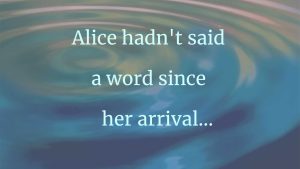
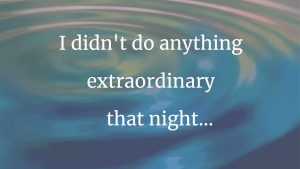
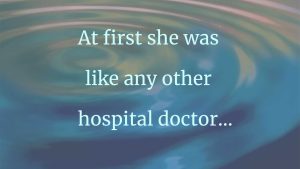
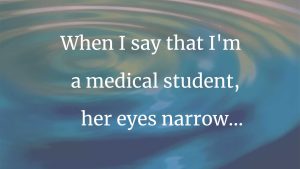
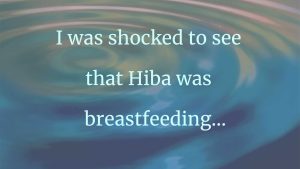
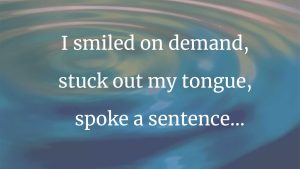
6 thoughts on “A Family History of X”
Wow! A poignant story, beautifully told. You are a badass, and your daughter is lucky to have you as a mother.
Thank you for sharing your honest and poignant life story. I’m so sorry your birth mother didn’t realize how lucky she was to have given birth to you. You are a gifted writer with many other gifts.
I am sorry about your breast cancer journey, but I love what you wrote about writing and why you do it. Be well!
(I worked for sixteen year’s at Pitt’s Writing Center in Oakland.)
Your story tears at the heart. Your telling of it is elegant and beautiful. Thank you.
Ms. Jakiela, I am sorry you were treated so poorly by your birth mother; her comments were vile and cruel, and you didn’t deserve to be treated like that. You showed restraint and mercy by choosing not to respond in kind. You also showed grace and determination in choosing such a challenging plan of care for your breast cancer diagnosis. While your daughter may not have the benefit of a complete family history, she clearly has an amazing mother who is planning to be there for the long haul, and that’s even better…
Thanks for sharing your story.
Thank you so much for your kind words.